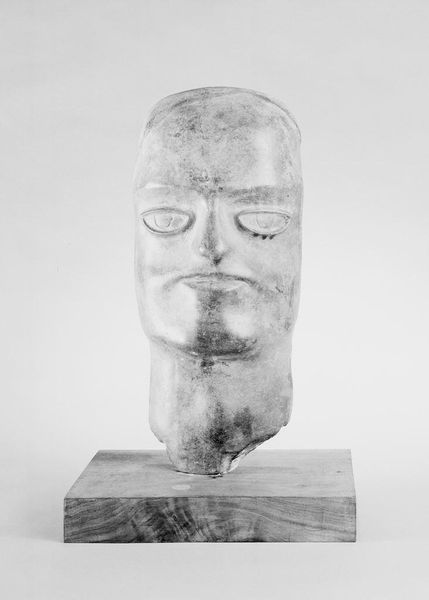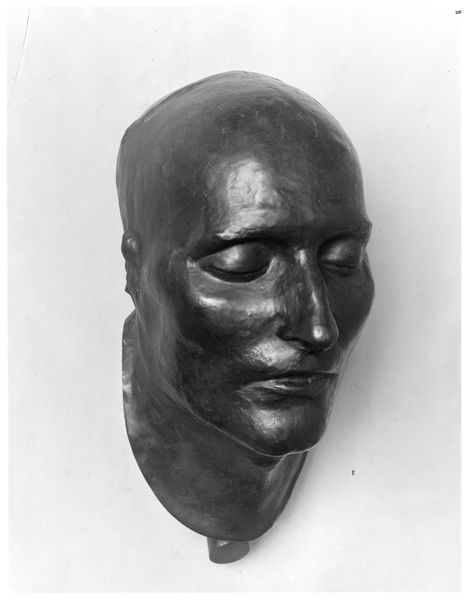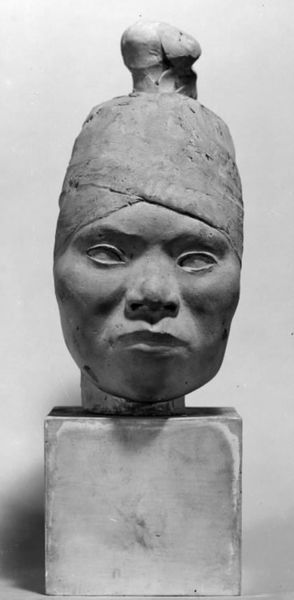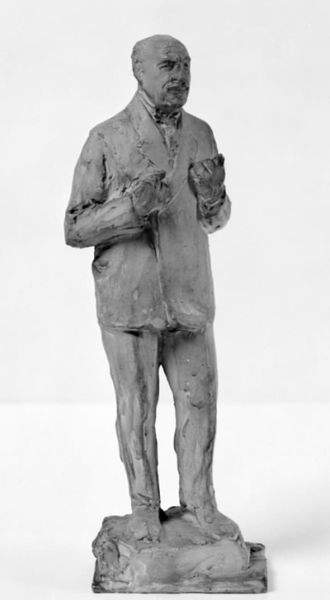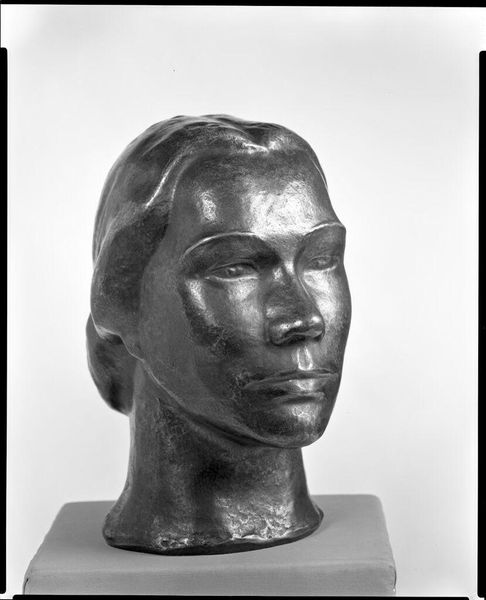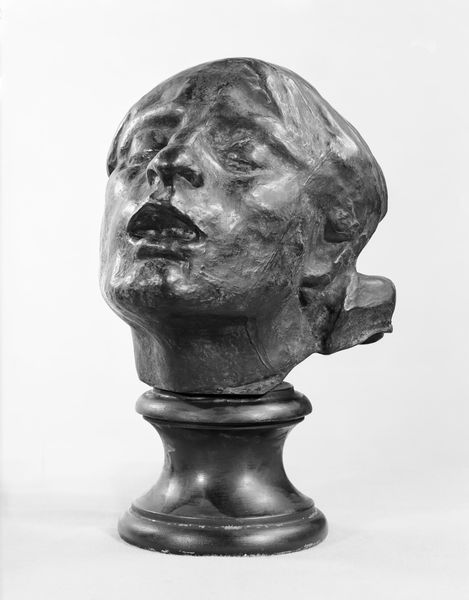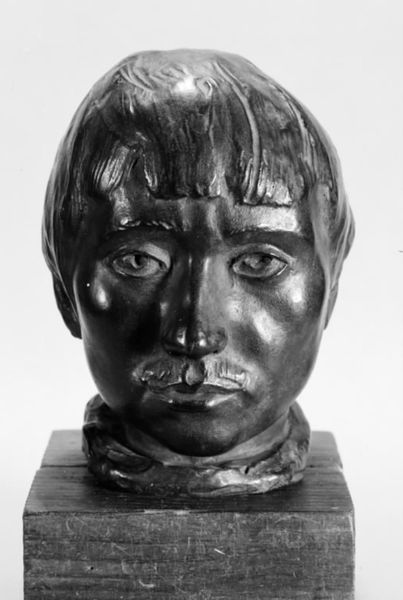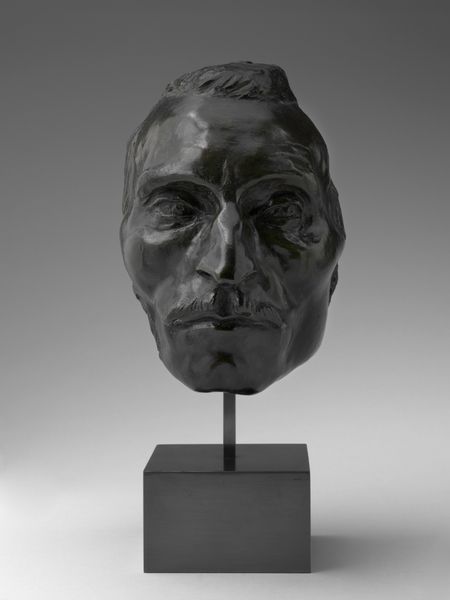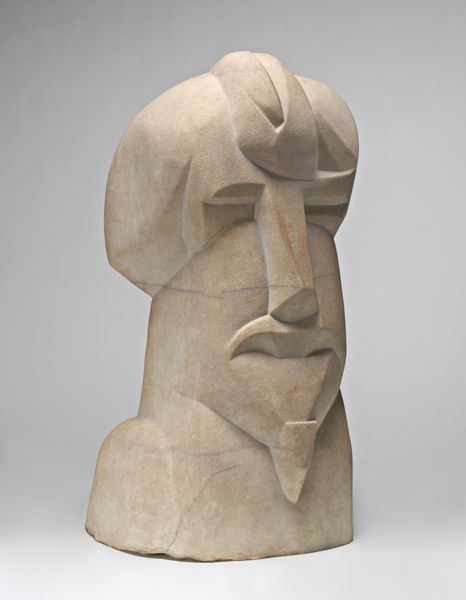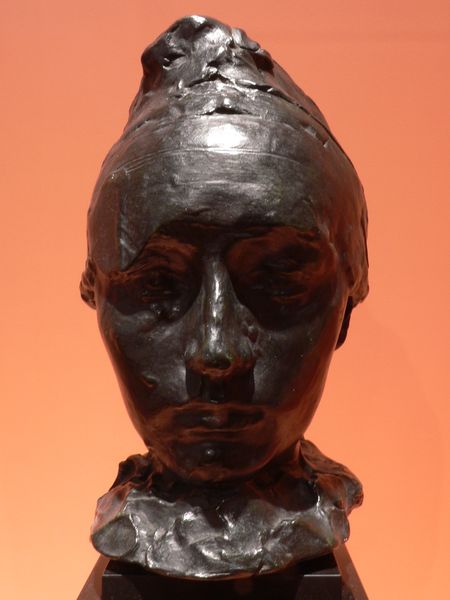
sculpture, wood
#
portrait
#
portrait
#
male portrait
#
portrait reference
#
sculpture
#
symbolism
#
wood
#
portrait drawing
Dimensions: 27.9 cm (height) x 16 cm (width) x 28.2 cm (depth) (Netto)
Editor: This is "Lapp Head," a wooden sculpture by Leander Engström, dated between 1901 and 1925. The closed eyes and stylized features give it a rather stoic, even solemn feel. What’s your interpretation of this work, considering its historical and social context? Curator: It's important to recognize that during this period, particularly in Scandinavian art, there was a surge of interest in portraying different ethnic groups, sometimes venturing into exoticization. This sculpture prompts us to ask, how did the artist and the society view the Sami people – then referred to as Lapps? Was this intended as an ethnographic study, or something more? Editor: So, it’s not just about the aesthetic qualities but also the politics of representation? Curator: Precisely. The context in which art is produced and received is vital. Whose voice is amplified, and whose is marginalized? The fact that it's titled "Lapp Head" forces us to confront the potentially objectifying gaze inherent in depicting a member of a minority group. What sort of visual tropes were in use at this time, and do they impact how the artist sculpted this particular artwork? Editor: That’s fascinating. I hadn't considered the potential implications of the title itself. So it's about looking beyond the surface beauty and questioning the power dynamics at play. Curator: Exactly. Considering its location, the SMK – Statens Museum for Kunst, prompts reflection. What role does a national museum play in shaping narratives and representing diverse cultural groups? How does exhibiting works like this contribute to or challenge existing perceptions of the Sami people? Editor: This has definitely broadened my understanding. It's not enough to appreciate the art, we need to critically examine the social implications. Thanks! Curator: Indeed. Every artwork is a product of its time and reflects the complexities of its socio-political landscape.
Comments
No comments
Be the first to comment and join the conversation on the ultimate creative platform.
